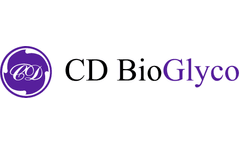Ingredients Of Cosmetics Articles & Analysis
10 articles found
Behind every cosmetic product lies a complex formulation consisting of various ingredients. ...
The cosmetics and skincare industry is constantly evolving and a recent trend that has emerged is the use of fermented ingredients in skincare products. Fermentation is a microbial metabolic process that has been used for centuries in food and beverage production, and now it has been extended to the cosmetic industry.What are Fermented Raw ...
In this article, we will explore the different types of cosmetic ingredients and their role in enhancing the beauty products we use every day. Cosmetic surfactants Cosmetic surfactants are one of the most common types of ingredients found in cosmetics. ...
The findings suggest that cocklebur may be a valuable ingredient in cosmetics, especially when combined with other potent compounds such as hyaluronic acid or retinoic acid, to fight aging. ...
Examples of products which are produced this way and are used within the beauty industry include hyaluronic acid and resveratrol.3 To obtain these compounds directly from plants would take a lot of water, energy, land and many processing steps to extract the desired compounds, this is impracticable and unsustainable.Biotechnology has had a positive impact on the beauty industry, as it can be used ...
The composition of cosmetics is very complex and varies with different types. Most cosmetics are processed from the cosmetic matrix (base) plus some other necessary ingredients (additives). Cosmetic substrates are the basic raw materials of cosmetics. They are mainly oily raw materials, ...
After the medical drug delivery is opened for application, liposomes have also gained more and more attention in the fields of food, cosmetics, etc. The first liposomal cosmetics were born in France, and a variety of new liposomal cosmetics have been commercialized in Europe and the United States. Many world-famous cosmetics ...
” SCCS provides opinions on questions concerning health and safety risks of non-food consumer products such as cosmetic products and their ingredients, including nanomaterials. SCHEER provides opinions on questions concerning health, environmental, and emerging risks, including potential risks associated with new technologies such as nanotechnologies. ...
On March 24, 2015, the European Commission (EC) announced a call for data on the ingredient “colloidal silver (nano).” According to the EC, it has received notification of several cosmetics products containing the ingredient “colloidal silver (nano)” (CAS No. 7440-22-4). The EC states that although this ...
Nano delivery systems hold great potential to overcome some of the obstacles in bio-pharmaceutical production, such as water soluble/insoluble pharmaceutical drugs and cosmetic ingredients, risks of toxicity, increasing bio-active efficacy, specificity, tolerability and its therapeutic index. Within nanoparticulate carriers, polymeric and lipid nanoparticles have ...







